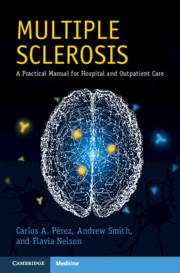Book contents
- Multiple Sclerosis
- Multiple Sclerosis
- Copyright page
- Contents
- Preface
- Chapter 1 Autoimmune CNS Emergencies
- Chapter 2 Clinical Features of Multiple Sclerosis
- Chapter 3 Multiple Sclerosis Phenotypes
- Chapter 4 Diagnostic Evaluation
- Chapter 5 Differential Diagnosis
- Chapter 6 Neuroimaging in Multiple Sclerosis and Its Mimics
- Chapter 7 Disease-Modifying Therapies
- Chapter 8 Treatment Goals
- Chapter 9 Symptomatic Management
- Chapter 10 Reproductive Issues
- Chapter 11 Pediatric Multiple Sclerosis
- Chapter 12 Useful Websites
- Appendices
- Index
- Plate Section (PDF Only)
- References
Chapter 10 - Reproductive Issues
Published online by Cambridge University Press: 10 February 2021
- Multiple Sclerosis
- Multiple Sclerosis
- Copyright page
- Contents
- Preface
- Chapter 1 Autoimmune CNS Emergencies
- Chapter 2 Clinical Features of Multiple Sclerosis
- Chapter 3 Multiple Sclerosis Phenotypes
- Chapter 4 Diagnostic Evaluation
- Chapter 5 Differential Diagnosis
- Chapter 6 Neuroimaging in Multiple Sclerosis and Its Mimics
- Chapter 7 Disease-Modifying Therapies
- Chapter 8 Treatment Goals
- Chapter 9 Symptomatic Management
- Chapter 10 Reproductive Issues
- Chapter 11 Pediatric Multiple Sclerosis
- Chapter 12 Useful Websites
- Appendices
- Index
- Plate Section (PDF Only)
- References
Summary
With multiple sclerosis (MS) affecting women two to three times more often than men, and an average age of onset of 20–50 years, a good portion of MS patients will be women of reproductive potential. Therefore, it is critical to develop an understanding of how the disease affects reproduction and menopause, and how it might impact their life goals. Over the course of this chapter, epidemiological risk factors based on gender, pregnancy, and the need for family planning will be reviewed.
- Type
- Chapter
- Information
- Multiple SclerosisA Practical Manual for Hospital and Outpatient Care, pp. 177 - 192Publisher: Cambridge University PressPrint publication year: 2021



